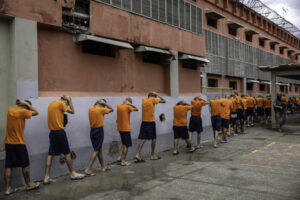Executive summary
May 1, 2013 marks the tenth anniversary of the day that the U.S. Navy left the small island of Vieques, Puerto Rico. The Navy had used portions of the inhabited island for military training ranges and ammunitions storage. On the training ranges, the Navy and Marines conducted aggressive air-to-ground bombing, amphibious assaults, ship-to-shore shelling, artillery practice, and a variety of other training exercises involving the use of a wide range of explosives and toxic materials.
Four years earlier, on April 19, 1999, a local citizen named David Sanes Rodríguez was working as a guard at one of the ranges and was killed when a 500-pound bomb from a Marine jet missed its target and landed on an observation post. Local non-violent protests which shut down the ranges grew to national and international dimensions, and the U.S. Congress and two succeeding administrations grappled with controversy until finally the Navy was forced by congressional and administrative action to leave the island.
It would be a mistake to think that the controversy started in 1999, however. Since the 1940s, the island and its people had endured six decades of forced relocation, bombardment, and the introduction of toxic materials to its environment. The Navy made promises over that time to improve the environment, lessen the impact of the training, improve the economy and treat the people with respect. Congress held hearings in 1980, 1981 and for three years after the 1999 accident. Today, ten years after the Navy left, the people of the island continue to suffer from poor health, high unemployment, a lack of basic services and limited access to much of the land that were taken from them 60 years ago.
This paper examines the history of the use of the island by the Navy, of the eventual legislation that furthered the punishment of the people, and the need for a more aggressive response to address the conditions that continue to afflict the people of Vieques.

